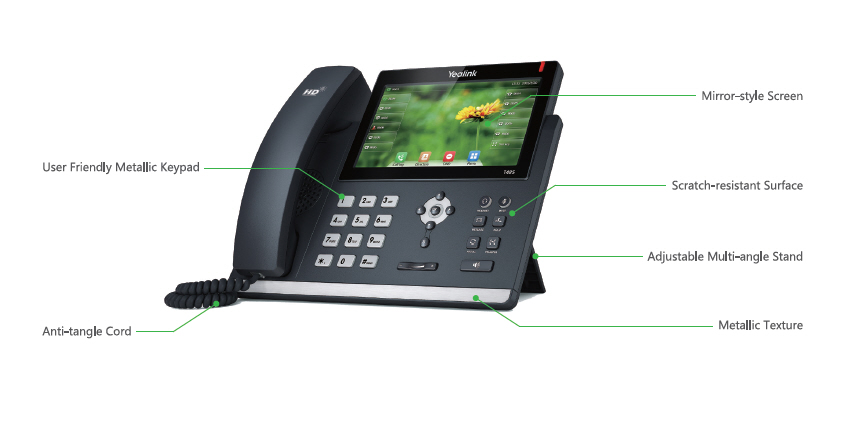In a world dominated by technology, businesses are constantly seeking efficient communication solutions. Among the most debated options today are Private Branch Exchange (PBX) systems and Voice over Internet Protocol (VoIP) phone systems. Choosing between these two can be quite a challenge, especially with the myriad of options available. This article will delve deep into assessing your company’s needs when choosing between PBX and VoIP, helping you make an informed decision that aligns with your operational requirements.

What is PBX? Understanding Private Branch Exchange Systems
Before diving into the comparison, let’s clarify what PBX entails. A PBX system is a private telephone network used within a company. It enables internal communication between employees and external calls to the public switched telephone network (PSTN).
How Does a PBX System Work?
A PBX handles calls internally without using external phone lines for every call made within the organization. Here’s how it works:
This setup offers various features such as call waiting, voicemail, and conference calling.
Types of PBX Systems
There are several types of PBX systems:
Traditional PBX
: Uses analog technology.
IP PBX
: Utilizes VoIP technology for communication.
Hosted PBX
: A cloud-based solution managed by third-party providers.
Understanding these variations is essential for assessing your company's specific needs.
What is VoIP? Exploring Voice over Internet Protocol Phone Systems
VoIP stands for Voice over Internet Protocol, which essentially means transmitting voice calls over the internet instead of traditional telephone lines. This technology has revolutionized business communications in recent years.
How Do VoIP Phone Systems Work?
VoIP phone systems work by converting voice into digital signals that can be transmitted over the internet. Here’s a simplified breakdown:
Key Features of VoIP Phone Systems
VoIP phone systems come with numerous features that enhance business communications, including:
Call forwarding Video conferencing Voicemail to email Unified messaging
These features often come at a lower cost compared to traditional systems.
Assessing Your Company’s Needs When Choosing Between PBX and VoIP
When evaluating whether to implement a PBX or VoIP system in your organization, start by identifying your specific needs.
Current Communication Challenges
What challenges does your current communication system face? Are you experiencing dropped calls or poor sound quality? Addressing these issues can guide you toward selecting an appropriate solution.
Budget Considerations
How much are you willing to spend on your communication infrastructure? Analyzing costs associated with both systems—installation fees, maintenance costs, and monthly service fees—is crucial when making this decision.
Comparative Analysis: Benefits of PBX vs VoIP
Now that we’ve laid down some foundational knowledge about both systems, let’s compare them head-to-head based on several factors critical for businesses today.
Cost Efficiency
When looking at cost efficiency:
PBX: Initial installation costs can be high due to hardware requirements. VoIP: Generally more affordable due to lower setup costs and monthly fees.
Scalability Options
How easy is it to scale each system?
PBX: Adding new lines often requires additional hardware. VoIP: Easily scalable; simply add more users online without additional hardware costs.
Maintenance Requirements
Consider who will handle maintenance:
PBX: Requires dedicated IT staff or third-party service contracts for upkeep. VoIP: Generally managed by service providers; less burden on internal teams.
User-Friendliness
Which system is easier for employees to use?
PBX: Familiar interface but may require training on advanced features. VoIP: Intuitive interfaces often designed for ease of use across devices.
Analyzing Performance Metrics in Communication Solutions
With any communication solution you consider, performance metrics play a significant role in determining effectiveness.
Call Quality Assessment
Evaluating call quality involves checking latency (delay), jitter (variance in packet delay), and packet loss rates. Both technologies have their pros and https://www.tumblr.com/glitterypizzapuppy/770590325038333952/understanding-different-pricing-models-for-your cons here:
Reliability Comparison
Reliability can determine whether a business thrives or dives under pressure:
PBX: Operates independently from internet fluctuations but may suffer during power outages unless properly backed up. VoIP: Highly reliable but dependent on consistent internet access; outages can lead to downtime if not adequately prepared with backups or failover solutions.
Security Considerations: Protecting Your Business Communications
Security remains paramount when discussing communication technologies; how secure are both solutions?
Vulnerabilities in PBX Systems
While traditional PBXs have been around longer and may seem secure due to their isolation from the internet, they still face risks like:
Threats Facing VoIP Phone Systems
On the flip side, VoIP systems pose unique security challenges given their reliance on internet protocols:
Implementing robust security measures like encryption becomes critical when opting for a VoIP phone system.
Integration Possibilities: Merging Communication Tools Effectively
Today’s businesses thrive on integration—how do these two systems fare?
Compatibility with Existing Software Tools
Whether you're using CRM software or project management tools, seamless integration can enhance productivity significantly:
Future-Proofing Your Communication Infrastructure
As organizations evolve rapidly along technological lines - future-proofing becomes increasingly vital:
Technology Trends Impact Emerging trends such as artificial intelligence could reshape communication landscapes altogether - which option allows better adaptability? 1.PBXs, while respected for their reliability may struggle against innovations found within newer platforms like cloud-hosted services offered via VoIPs. 2.VoIPs, however generally provide roomier frameworks allowing companies leverage new advancements faster than traditional setups could ever hope!
Case Studies: Successful Implementations of Each System
To provide real-world context around our discussion let’s explore examples showcasing triumphs achieved via both methods!

|Company Name|Industry|Chosen System|Benefits Realized| |-|-|-|-| |XYZ Corp.|Retail|Hosted Voip|Reduced Costs & Enhanced Collaboration| |ABC Ltd.|Manufacturing|Traditional Pbx |Improved Internal Communication|
Through analyzing these case studies we glean insight regarding potential outcomes produced by either choice available!
Employee Perspectives on Communication Tools
Employees’ perspectives matter significantly within any organization! To understand firsthand experiences resulting from either option let's take feedback directly sourced from team members themselves!
“Switching over from our old pbx system was seamless thanks largely due integrated voip features" said Jane Doe - Marketing Director at XYZ Corp.
“I appreciate having video conferencing capabilities directly linked my desk phone” remarked John Smith - Sales Associate ABC Ltd.
FAQs About Choosing Between PBX and VoIP
Here are some frequently asked questions regarding this topic:
1) What type of business benefits more from using a pbx? - Businesses requiring robust internal communications often lean towards traditional pbxs since they offer greater control over physical infrastructure involved ensuring high-quality connections locally!
2) Is there a risk involved when switching entirely onto voip? - Potentially yes! Transition processes must account potential downtimes impacting overall productivity unless proper planning occurs beforehand minimizing disruptions wherever possible!
3) Can I combine both systems together effectively? - Absolutely! Many organizations find hybrid approaches best suited meeting diverse requirements across departments ensuring optimal output realized throughout their operations!
4) How do startups approach this decision-making process? - Startups typically favor flexibility prioritizing cost-effective options leading them towards exploring various hosted voip solutions currently available market-wide!
5) Are there ongoing fees associated with each solution after installation? - Yes indeed! Monthly subscriptions might apply depending upon chosen provider/plan selected hence factoring those aspects crucial while estimating overall expenses incurred long-term!
6) Which option provides superior customer support services post-purchase? - Varied greatly per provider however many dedicated voip providers often tout enhanced customer care resources compared legacy counterparts paving way smoother journeys once implemented!
Conclusion: Making an Informed Choice Based on Company Needs
After thoroughly assessing various aspects ranging from costs scalability performance metrics security considerations integrations future-proofing opportunities case studies employee perspectives ideally one should emerge equipped capable making informed choices tailored specifically aligning desires aspirations governing individual organizations moving forward confidently knowing groundwork laid solidly beneath them thanks diligent efforts put forth throughout entire evaluation process undertaken diligently exploring all angles involved choosing wisely between pivotal options presented here today namely pbx versus modern innovated tech solutions represented through voip possibilities awaiting exploration unlocking futures untold!






























